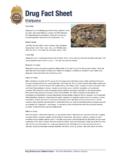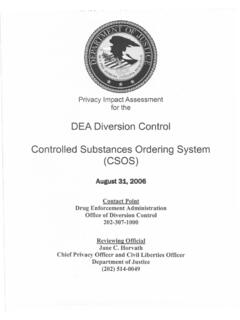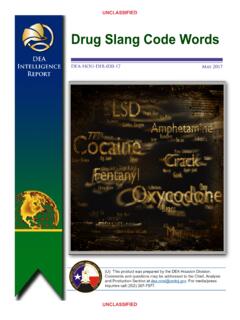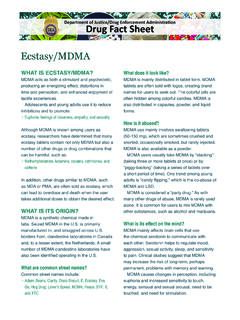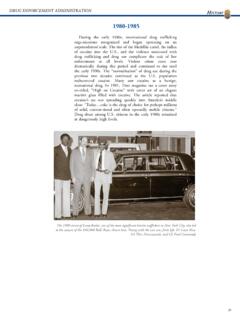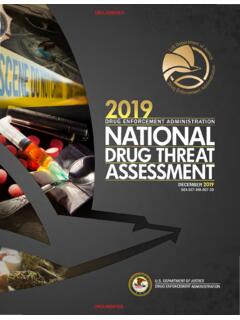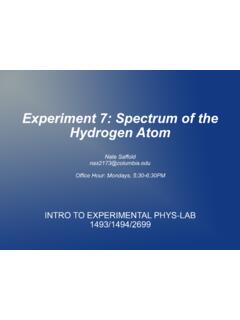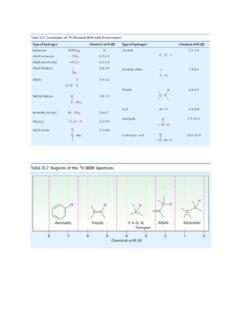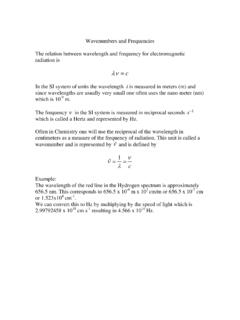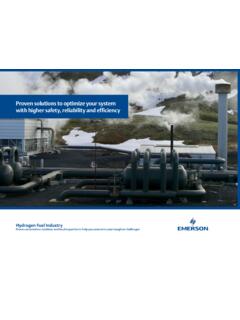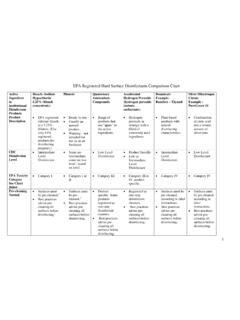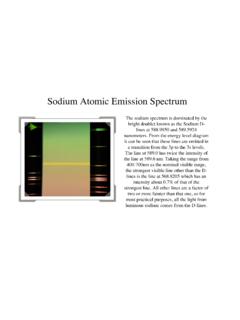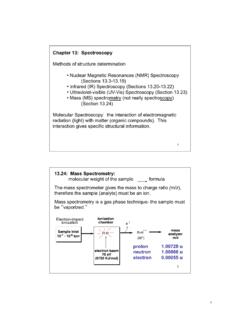Transcription of The Mass Spectrum of Cocaine: Deuterium Labeling and …
1 The mass Spectrum of Cocaine: Deuterium Labeling and MS/MS Studies R. Martin Smith*. rMS Workshops, LLC. 6442 Dylyn Drive Madison, WI 53719. [email: rmsworkshopsllc -at- ]. John F. Casale Department of Justice Drug Enforcement Administration Special Testing and Research Laboratory 22624 Dulles Summit Court Dulles, VA 20166. [email address withheld at author's request]. ABSTRACT: Seven derivatives of cocaine (l-2-exo-carbomethoxy-3-exo-benzoyloxytr opane; Ia) were synthesized in which the hydrogen (H) atoms at various positions were replaced by Deuterium ( 2H = D) specifically, at the N-methyl, O-methyl, phenyl, 2-, 3-, and 4- positions, as well as at the combined 1-, 5-, 6-, and 7- positions (Ib - Ih, respectively).
2 The mass spectra of these com- pounds were recorded. Elemental compositions for selected ions in the Spectrum of Ia were determined using high-resolution mass spectrometry, and precursor and product ion spectra for many of these ions were studied using MS/MS. Mechanisms for many pre- viously proposed fragmentation pathways were either confirmed or clarified, and new insights were gained into the fragmentation of Ia. Reasons for variations in relative intensities of the m/z 94 and 152 peaks between the spectra of the cocaine diastereomers are proposed. KEYWORDS: forensic science, cocaine, mass spectrometry, fragmentation mechanisms, Deuterium -labeled derivatives, high- resolution MS, MS/MS, product and precursor ions, pseudococaine.
3 The electron ionization (EI) mass spectra of tropane deriva- tives were first studied by Budzikiewicz, Djerassi, and cowork- ers, using the spectra of deuterated derivatives and the examina- tion of metastable ion spectra [1,2]. Cocaine (l-2-exo- carbomethoxy-3-exo-benzoyloxytropane; Ia), a molecule of considerable forensic interest, was not included in the original studies. Subsequent workers elucidated similar basic fragmen- tation pathways for Ia (Figures 1-3) [3,4,5]. Many questions remain, however, regarding the nature of some fragmentations and the formation of less abundant ions. In particular, previous proposals concerning the relative intensities of the m/z 152 peak and the m/z 94/96 pair of peaks in the spectra of the cocaine diastereomers seem unsatisfactory.
4 The present work attempts to expand upon this knowledge. Cocaine (Ia: All H = H). Seven labeled derivatives of Ia were prepared in which the O-CD3 (Ib: O-CH3 = OCD3; all other H = H). hydrogen (H) atoms at specific positions were replaced by deu- NCD3 (Ic: N-CH3 = N-CD3; all other H = H). terium (2H = D; structures Ib-Ih). mass spectra for these com- pounds were recorded and examined to determine the presence Phenyl-d5 (Id: C6H5 = C6D5; all other H = H). or absence of the labels for many of the ions represented in the 2-d1 (Ie: H2 = D; all other H = H). cocaine Spectrum . In addition, MS/MS data were collected in 3-d1 (If: H3 = D; all other H = H).
5 Both the precursor ( parent ) and product ( daughter ) ion modes in order to ascertain relationships between the various 4,4-d2 (Ig: H4 = D; all other H = H). ions. 1,5,6,6,7,7-d6 (Ih: H1 = H5 = H6 = H7 = D; all other H = H). Experimental Procedures reagent grade quality products of Sigma-Aldrich Chemical Solvents, Chemicals, and Materials (Milwaukee, WI). Alumina (basic) was deactivated slightly by All solvents were distilled-in-glass products of Burdick and adjusting the water content to 4% (w/w). Cocaine (Ia), pseu- Jackson Laboratories (Muskegon, MI). N-Methyl-N-trimethyl- dococaine, ecgonine methyl ester, N-trideuteriomethylcocaine silyltrifluoroacetamide (MSTFA) was obtained from Pierce (Ic), and -cocaine were from the authentic reference collection Chemical (Rockford, IL).
6 All other chemicals were of the DEA Special Testing and Research Laboratory. 16 Microgram Journal, Volume 7, Number 1 (March 2010). Figure 1 - alpha-Cleavage fragmentations of the cocaine molecular ion after initial ionization at N. Synthesis flask containing MeOH (50 mL) and boron trifluoride diethyl All syntheses were performed in flame-dried glassware and etherate ( g, mmol) and refluxed for 2 hours. The reac- protected from moisture. Ie, If, Ig, Ih, and 2-d1-, 3-d1-, 4,4-d2-, tion was evaporated in vacuo, quenched with water (40 mL), 1,5,6,6,7,7-d6-pseudococaine were synthesized as previously adjusted to pH 9 with Na2CO3, extracted with CHCl3 (2 x 100.)
7 Described [6]. Unlabelled 2-carbomethoxy-3-tropinone was mL), dried over anhydrous Na2SO4, filtered, and evaporated in also synthesized as previously described [7]. Yields for the vacuo to a semi-crystalline mass . Approximately g of the following syntheses were not optimized. crude product was dissolved in a minimal amount of Et 2O and Cocaine (OCD3) (Ib): Anhydrous benzoylecgonine (110 mg, loaded onto a glass chromatographic column (1 x 22 cm) con- mmol) was combined with CH2Cl2 (4 mL) and taining 15 g of basic alumina (150 mesh). The column was 1',1'-carbonyldiimidazole ( mg, mmol) in a 15 mL eluted sequentially with 20 mL each of the following solvents: centrifuge tube.
8 The reaction was allowed to stand overnight. 1) Et2O, 2) Et2O/CHCl3 (1:1), and 3) CHCl3. Ten mL fractions Trideuteriomethanol (CD3OH; 100 L) was added and the mix- were collected and examined by GC/MS, both underivatized ture allowed to stand for one day. The reaction mixture was and following derivatization with MSTFA. The first three frac- evaporated to dryness under a stream of nitrogen at 75 oC and tions were combined and evaporated to dryness to give a clear treated with 7 mL of hot hexane. The hexane was decanted to a oil (655 mg, 15% yield). new tube and allowed to cool, precipitating the imidazole by- 2,3-Dehydrococaine: 2-Carbomethoxy-3-tropinone (153 mg, product.
9 The hexane was filtered, evaporated in vacuo, recrys- mmol) was combined with dry pyridine (2 mL) and ben- tallized from hexane, and dried to provide a white powder zoyl chloride (300 mg, mmol) in a 15 mL centrifuge tube (42 mg, 36% yield). and left to stand for 1 hour. Et2O (13 mL) was added to pre- Cocaine (phenyl-d5) (Id): Ecgonine methyl ester hydrochlo- cipitate the crude product, which was washed with additional ride (500 mg, mmol) was suspended in 7 mL of dry pyri- Et2O (10 mL). The semi-crystalline material was dissolved in dine in a 100 mL round bottom flask, to which pentadeute- H2SO4 (1 mL), washed with Et2O (2 x 14 mL), adjusted riobenzoyl chloride (437 mg, mmol) was added.
10 After to pH 9 with Na2CO3, extracted with CHCl3 (1 x 10 mL), dried stirring for 5 days, the reaction was diluted with 50 mL of dry over anhydrous Na2SO4, filtered, and evaporated in vacuo to acetone to precipitate the product. The crude product was cap- give an off-white powder (118 mg, 50% yield). tured by suction filtration, dissolved into water (4 mL), ren- dered alkaline (pH = 9) with aqueous Na2CO3, extracted with Gas Chromatography/Low Resolution- mass Spectrometry CHCl3 (1 x 8 mL), dried over anhydrous Na 2SO4, filtered, and (GC/LR-MS). evaporated in vacuo to a crystalline mass . The product was GC/LR-MS analyses were performed using an Agilent (Palo recrystallized from hexane to provide a white powder (114 mg, Alto, CA) Model 5973 quadrupole mass -selective detector 17% yield).
